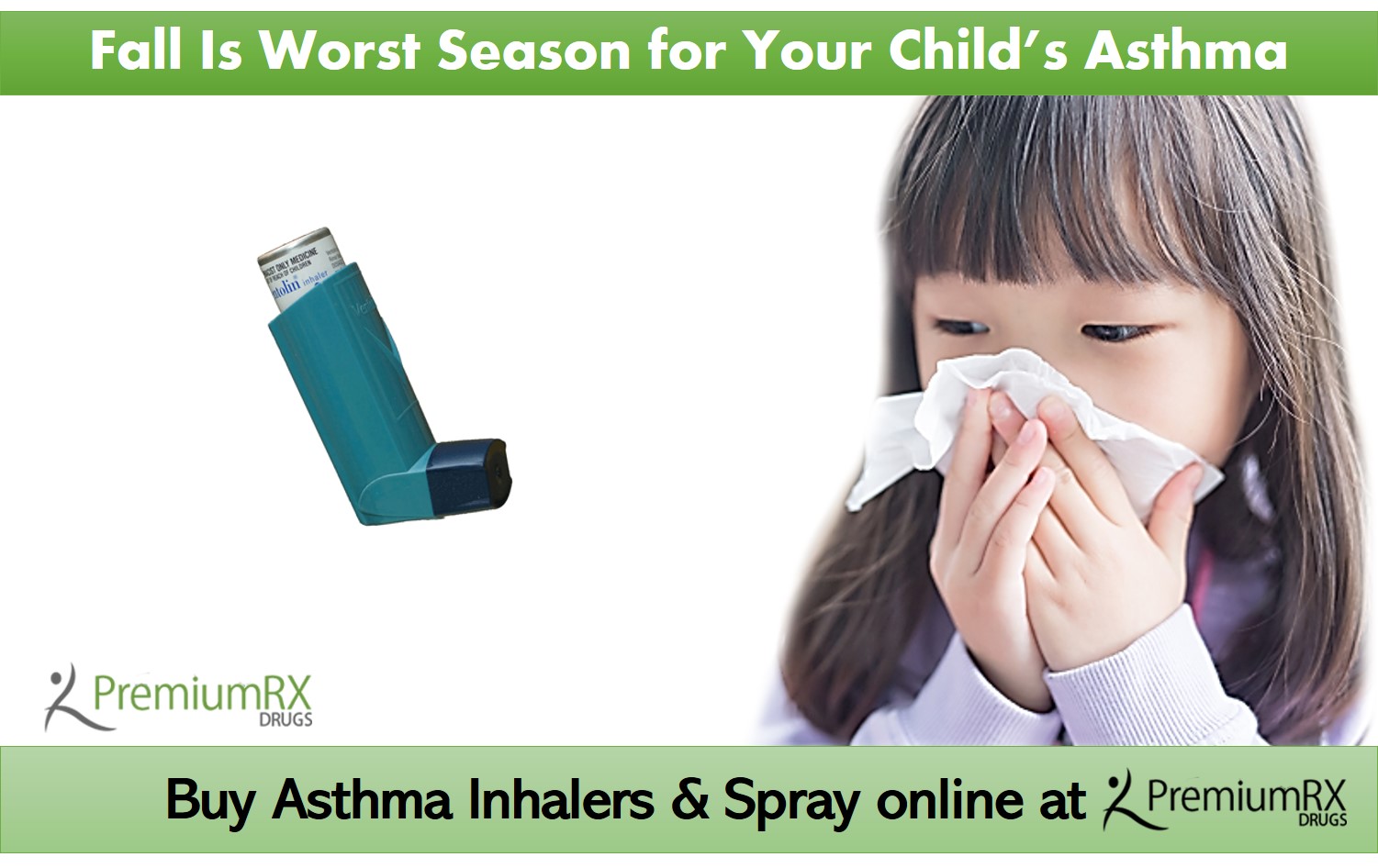Fall comes with school days and an increase in childhood asthma symptoms. It is the worst season for children suffering from asthma as they are exposed to numerous respiratory viruses when they resume their school. Two important factors that cause asthma flare-up are:
1. Viral infections
2. Close association with other students with viruses
Cold air during the season can lead the lungs of asthmatics to tighten up. It is one of the main causes of childhood asthma spike around this time of the year. Another culprit is the cold and the flu which starts off once the children start attending school. Classrooms full of grimy hands and runny noses are a very good breeding ground for viruses.
While people with asthma are not more likely to catch the flu than people without asthma, but when they do, their condition generally tends to be more severe and lasts for a longer duration. Infections in the respiratory tract tend to aggravate asthma in children, which in turn can cause difficulty in breathing, coughing, wheezing and asthma attacks.
Children with asthma are more vulnerable to complications due to the flu. Another issue during the fall is the presence of allergens. Some plants produce billions of pollen in this season and these are present in large quantities in the air, which triggers asthma attacks.
During the summer season, childhood asthma attacks are fewer as children are not as exposed to viral infections and do not spend as much time in school. While some children do suffer during the summer too due to the high levels of humidity and pollution, the fall and winter season is the most challenging primarily due to the increase in the exposure to viruses. Reports show that a major chunk of the asthma attacks, as much as 80% are caused by viruses.
Here is the typical progression of asthma in children.
• Upper respiratory issues in the first 3-5 days with symptoms such as a runny nose, sneezing, and congestion
• After some time, the virus may spread to the lower airways.
• This leads to inflammation and causes the obstruction of the airways
Managing childhood asthma
There are many steps that you can take as a parent to reduce your child’s chances of an asthma attack.
• Make sure the child washes his or her hands and keeps them clean. Most of the viruses spread through physical contact, by rubbing the eyes or nose with infected hands.
• It is best to stay away from areas where there are large numbers of people. While this is not always possible, it decreases the risk of contracting asthma.
• Children who suffer from moderate to severe asthma need corticosteroid medication, which is prescribed by the doctor. It is important for parents to discuss the safety as well as the effectiveness of the medicines that they give to their children. You must also know the correct dosage for asthma in children.
Also Read: The Differences between Childhood and Adult-Onset Asthma
For most people, asthma usually begins in childhood and continues all through life. Although it cannot be cured, with proper care they can be kept under control and managed well. While there are several over-the-counter decongestants, antihistamines, and nasal sprays available in the market today to treat asthma, you must work with a paediatrician to ensure that your child’s asthma is rightly diagnosed and the signs and symptoms of the childhood asthma are properly treated.
Your child’s asthma treatment should begin with a consultation with your paediatrician. If required your paediatrician may refer you to a specialist for the additional treatment depending on the severity of the symptoms.
Max Jones
Latest posts by Max Jones (see all)
- How to Revive Your Sex Life - October 27, 2023
- Smoking and Asthma - October 20, 2023
- 10 Causes Of Erectile Dysfunction You Probably Didn’t Know About! - June 29, 2023




